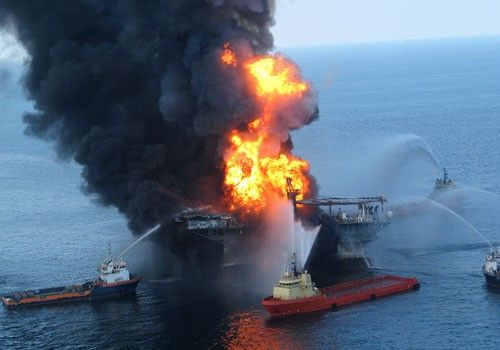Gulf's Recovery From BP Oil Spill Could Take Years

A recent expedition to the bottom of the Gulf of Mexico found that last summer's oil spill will likely affect the region for several more years.
Dr. Samantha B. Joye, a professor at the University of Georgia department of Marine Sciences, presented a paper at the annual meeting of the American Association for the Advancement of Science in Washington, D.C. She outlined the data gathered from a set of trips to the sea floor in a submersible and using remotely operated vehicles.
What she and her team found was a mixture of crude oil, methane and other hydrocarbons, sometimes inches thick, covering a large area near the site of the Deepwater Horizon oil well.
A report for the administrators of the compensation fund for those affected by the oil spill was conducted by Texas A&M University and suggested that many shrimp fisheries and oyster populations would recover by 2012. But the report says nothing about the ecosystems on the sea floor.
Joye's work suggests that recovery could take a lot longer. She told the AAAS meeting that recovery could take a decade.
The Deepwater Horizon spilled an estimated 4.9 million barrels of oil into the Gulf, enough to nearly fill the Empire State Building. Eleven workers were killed in the explosion, and the pollution resulted in the closure of shrimp fishing areas several months later. Tar balls still appear on the coast of Louisiana.
Joye's team ventured down in a U.S.-Navy-owned deep sea vehicle called Alvin, to depths of thousands of feet in early December. In an online chat presented by Science, said that ordinarily there would be several kinds of marine life at that depth that would ordinarily be visible, but there was little.
Looking out the window of Alvin, at first, it did not seem to be so bad but as we got nearer to the bottom, I realized there were no infauna (worms and such) poking their heads out to greet us, she said. Usually, there is a tremendous diversity of infaunal organisms on the bottom. Then, we began to see dead organisms like brittle stars. I noticed there were no holothurians (sea cucumbers) and these organisms are tremendously abundant at seeps. So, it was a grim view.
Joye added that about 40 percent of the hydrocarbons that spilled from the well were methane. That increases the estimate for the equivalent barrels of oil substantially, she said. On the sea floor, the cold and high pressures turn methane into a solid.
The oil creates problems for much of the seal life on the bottom because many animals are filter feeders, and pollutants interfere with that.
While there are naturally occurring organisms that break down hydrocarbons, Joye said they can't work fast enough to clear the oil away anytime soon. Another problem is that they tend to consume oxygen, which depletes it from the surrounding water, making it difficult for other animals to survive.
© Copyright IBTimes 2024. All rights reserved.





















